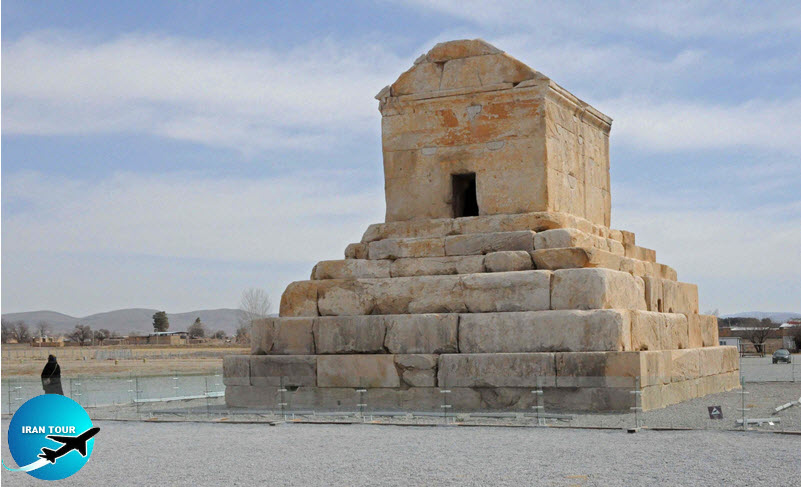Copyright 2020 - 2021 irantour.tours all right reserved
Designed by Behsazanhost
The Northern part of Fars Province
The Northern part of Fars Province
The road to northern Fars is very picturesque. It goes through a succession of highlands crossed by a spectacular gorge, from whence it makes a long ascent through an, especially fine mountain landscape. Then it takes a straight run over a high plateau through a new succession of highlands. The modern road passes by Pasargadae go to Abadeh and on to Izadkhast, virtually the last important settlement in the Fars province. The old road formerly passed through Eqlid, where some sites of minor historical importance have survived. On the road to Eqlid, one can conveniently visit Sepidan, which has what may be the most extraordinary natural scenery in Fars.
 |
| Izadkhast Castle |
Izadkhast
Izadkhast is a city in the central district of Abadeh county, in Fars province, Iran. It is the first city in the province of Fars on the Isfahan-Shiraz highway. The Izadkhast complex is located in Fars Province in Iran, about 135 km south of Isfahan. The complex consists of the castle of Izad-Khast, a caravanserai and a bridge from the Safavid period. The structure of the castle is of particular interest due to the different architectural styles incorporated into the construction of the building, including the Sassanid and Qajar periods. The architecture of the castle is unique to Izadkhast, and only comparisons of building materials can be made with other sites in the region.
Sepidan
Located about 100 km northwest of Shiraz, the area of Sepidan holds some of the most spectacular natural sites in Fars. The region stretches over a continuation of the Zagros mountain range at an average height of 2,250 m above sea level. | With the abundance of snow in winter and verdure in summer, this beautiful region attracts numerous tourists throughout the year. Two excellently equipped skiing sites exist northwest of Sepidan - one in Shekarak and the other in Puladkaf.
 |
Bavanat
The Bavanat region is a 20km-long walnut forest in a lush valley between the Zagros Mountains in the south and deserts to the north. The main town is Suryan, but it is Bazm 18 km further east that drives visitors here. The mountains near Bazm village are home to Khamseh nomads, a confederation of Arabic, Turkish, and Farsi speaking people, who from April to October pitch their tents there.
 |
Eqlid
Located 275 km from Shiraz, Eqlid is among the oldest cities of Fars, but now that the modern highway from Esfahan to Shiraz passes through Abadeh instead, the prestige of Eqlid has diminished. The region is situated at an average height of 2,200-2,300 m above sea level. The local mountains are part of the Zagros range with the highest peak, Mt. Bal, rising 3,943 m. The area enjoys a steppe climate with mild summers and very cold winters. The largest river is the Bruk, running through Eqlid in a north-south direction.
Abadeh
Abadeh was previously nothing more than a sleepy hamlet, famous only for its fine orchards and remarkable handicrafts. The construction of a modern highway from Esfahan to Shiraz, however, caused a radical change in the town's fortunes. Abadeh lies at an elevation of 2,011 m above sea level northeast of the Zagros mountain range. It has cold winters and mild summers. Local agricultural products (cultivated largely by means of qanat* irrigation) include wheat, oats, sesame, cotton, castor oil, and leeks. Handicrafts are marquetry, carpet weaving, and Give (light cotton summer shoes).
 |
Pasargadae
Pesaroadee is located about 40 km northeast of Shiraz (140 km away from Shiraz). It was the earliest capital of the Achaemenid Empire. The city was created by Cyrus the Great, the founder of the Achaemenid Empire, and the first Persian Empire. Pasargadae covers an area of 160 Ha and represents some of the earliest manifestations of Persian art and architecture. This site includes a structure widely believed to be the Tomb of Cyrus, the fortress of Talle Takht and the remains of two royal palaces and Gardens, The Four Gardens type of Pasargadae represents the earliest known example of the Persian Chahar Bagh (Four Gardens) and became a prototype for Western Asian. The most important monument in Pasargadae is the tomb of Cyrus the Great which has a similar design to Mesopotamian Ziggurats. In 2004, UNESCO inscribed Pasargadae on its World Heritage List.
- Details
- Category: Shiraz Tourism